Visiting a state capitol complex? Really? Hear me out.
We previously toured the Moravian Pottery and Tile Works, and we knew that tiles made there featured in Pennsylvania’s capitol. What we didn’t know is that the rest of the capitol is jaw-dropping!
The Pennsylvania State Capitol is located in Harrisburg. As we were in town on a Sunday, we had no choice but to take a tour if we wanted a peek inside. On weekdays you can do a self-guided tour, but honestly I think you’d miss a lot. During the weekdays the capitol is crawling with people, but on our visit the only people in the building were apparently just security, the tour guide, and a handful of tourists. And if voting was happening or the court was in session, we would have been prohibited from entering those rooms.
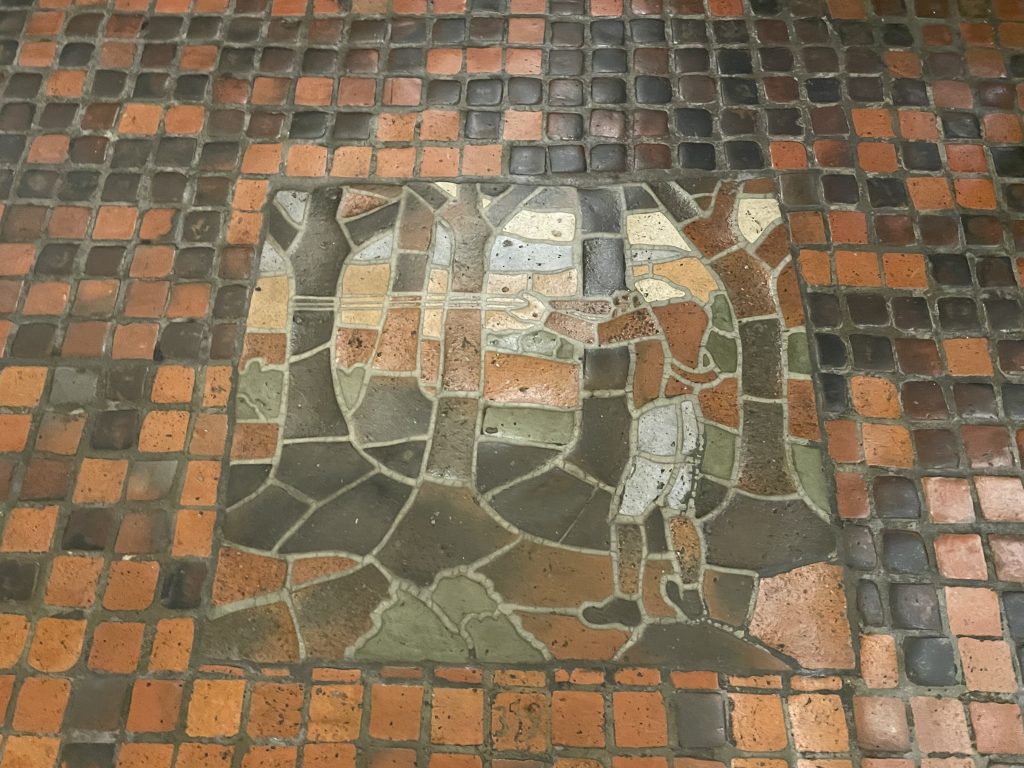
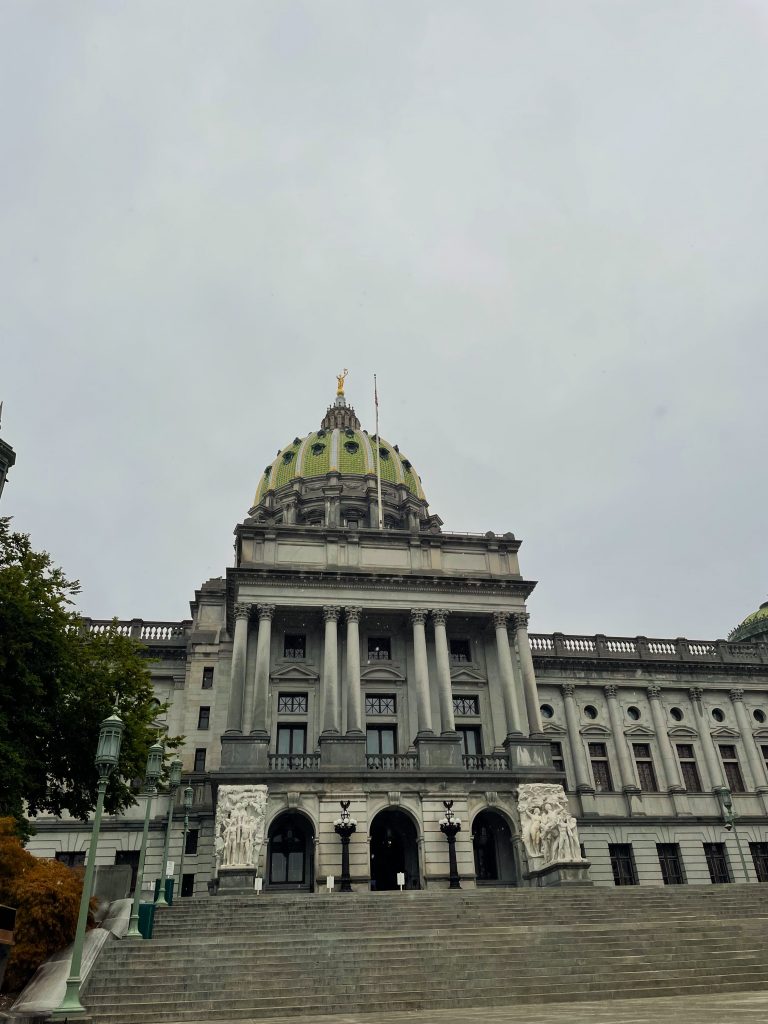
The Beaux-Arts style building was designed by Joseph Miller Huston and completed in 1906.
It is home to the Pennsylvania House of Representatives, Senate, Supreme and Superior Courts, in addition to 600 rooms and offices including those for the Governor and Lieutenant Governor.
The inside is decorated in the American Renaissance style, featuring paintings, stained-glass windows, 23-karat gold, and the finest furnishings available.
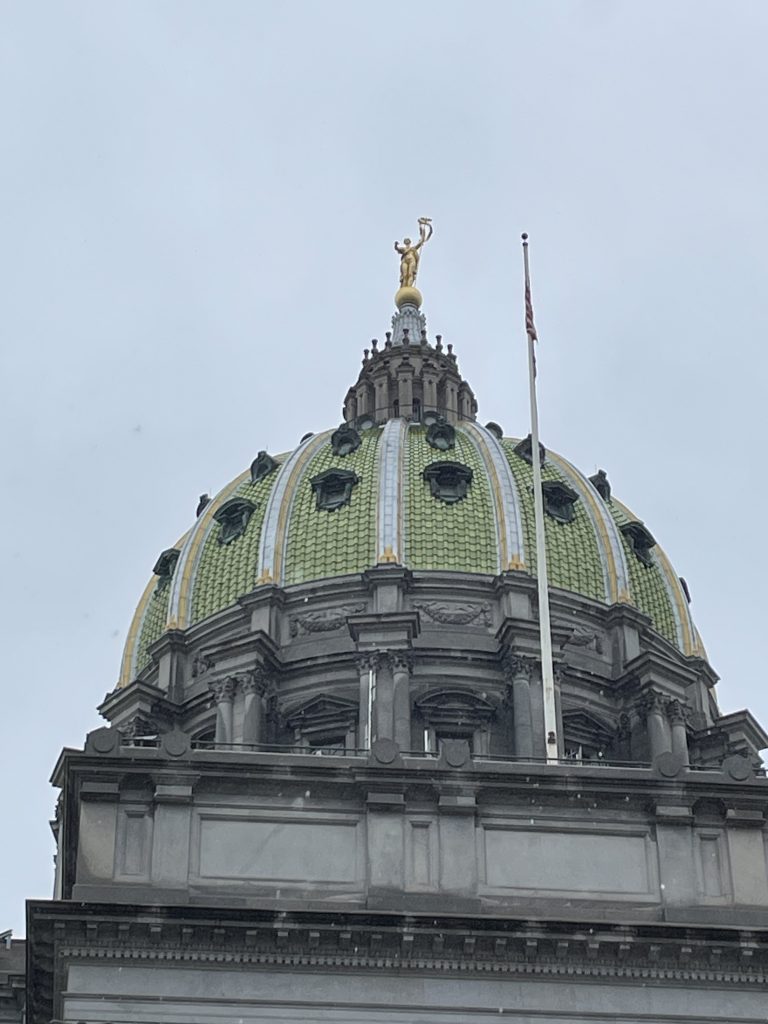
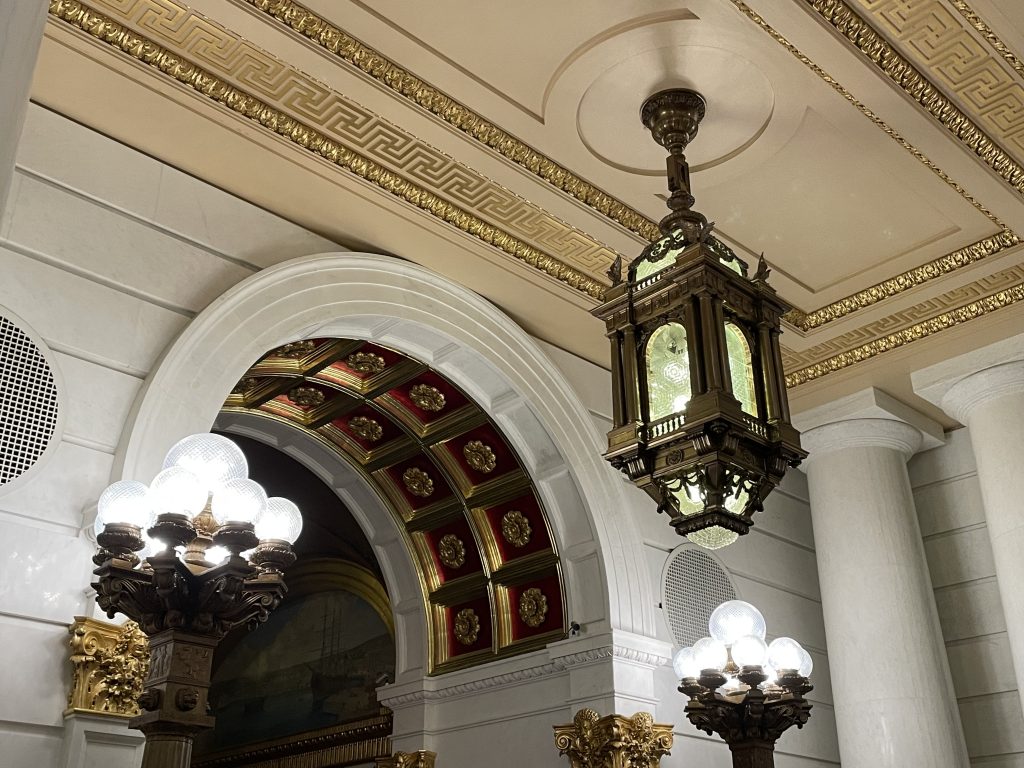
The original capitol of Pennsylvania was Philadelphia, but thanks to Harrisburg’s prime location on the Susquehanna River and a donation of land by John Harris Jr., the capitol was relocated to Harrisburg in 1812.
The original capitol building was destroyed by fire in 1897. A brick replacement was begun but never finished, as everyone thought it was unbecoming for a state capitol.
The current building was so becoming (President Theodore Roosevelt called it “the handsomest building I ever saw”) that a few questions were raised about the use of public funds in its construction. The final cost of $13 million was more than three times what had been appropriated, and Huston and four others were convicted of graft for price gouging. Oops.
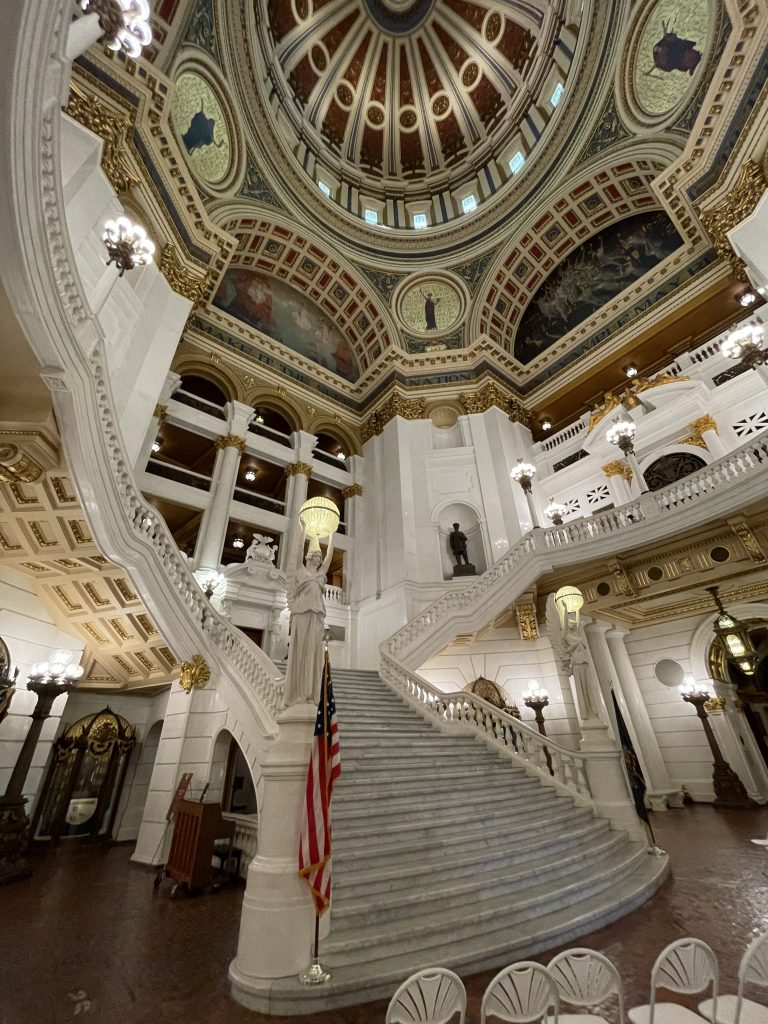
When you enter the Rotunda, you immediately stop in your tracks at the grandeur of it. The dome soars 272-feet overhead, and a grand imperial staircase sweeps upward. A three-tiered gallery holds eight large murals by artist Edwin Austin Abbey.
The floor is comprised entirely of the colorful Moravian tiles we had come to see. Designed by Henry Chapman Mercer, they feature nearly 400 mosaics on the state’s history, animals, industries, etc., in 16,000 square feet! The Rotunda was inspired by the Paris Opera House. 48 portholes at the top of the dome and 4,000 lights illuminate it all.
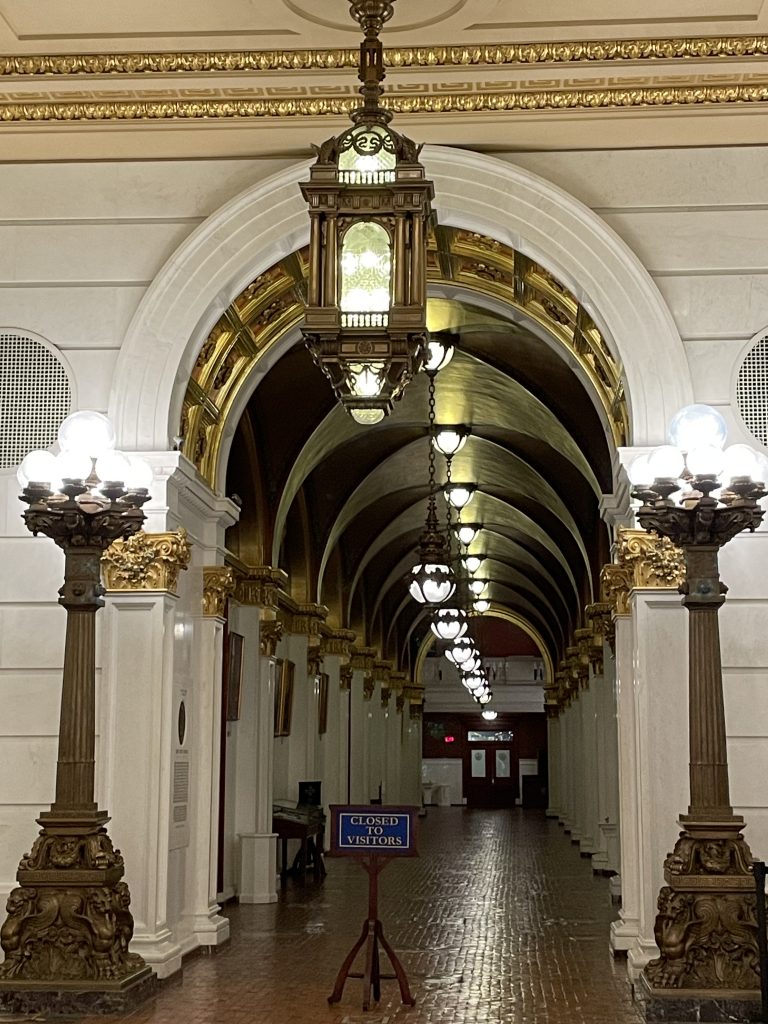
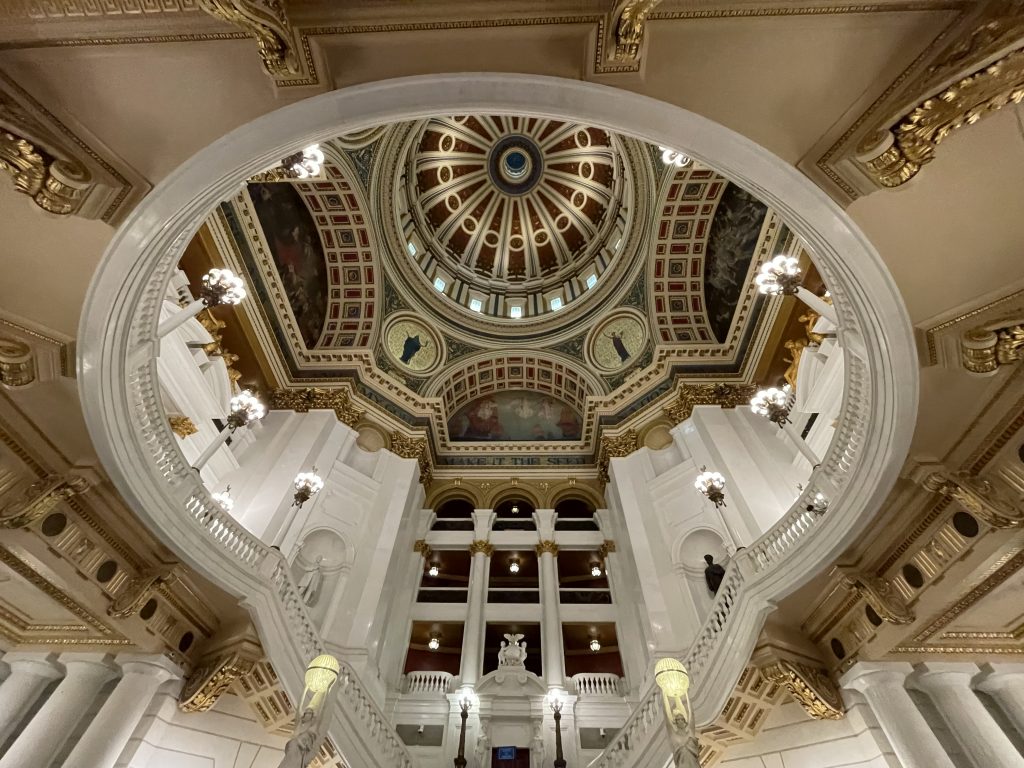
The French Renaissance Senate Chamber features paintings by Violet Oakley (yes, a woman, definitely a rarity for the time period), the desks (still used today) made of mahogany imported from Belize, green Connemara marble imported from Ireland, and four iron and glass floor light fixtures that weigh two tons each and finished in gold (literally gold, not gold-colored).
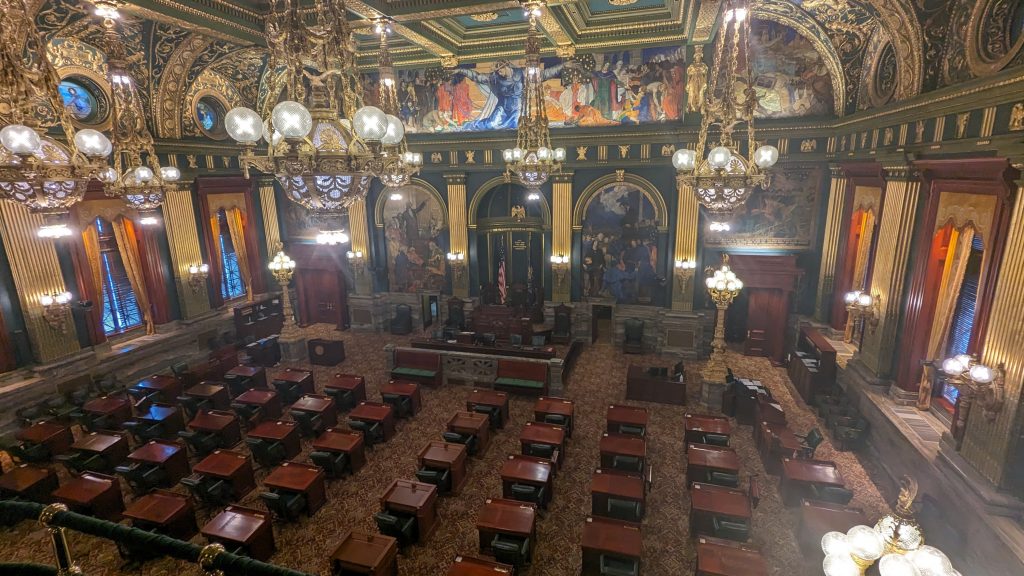
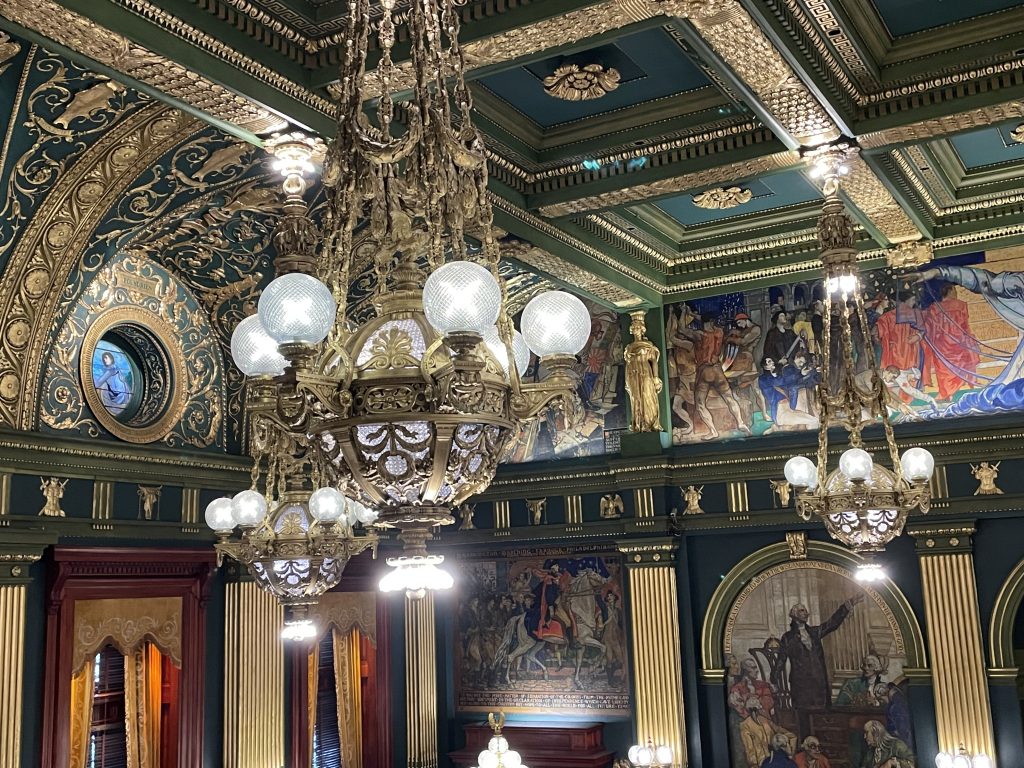
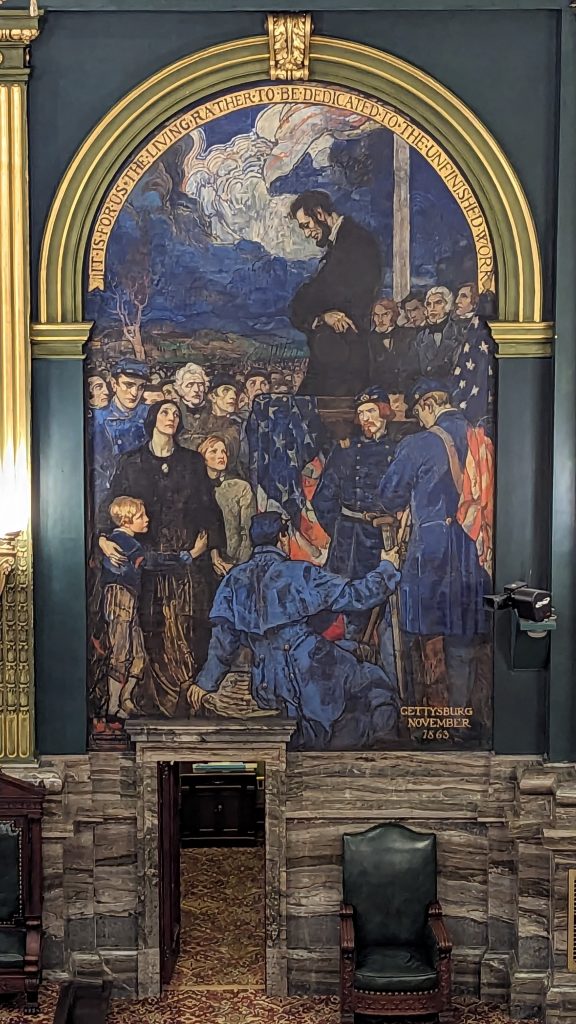

The Italian Renaissance House Chamber (see the cover photo to this post for an overall view) was supposed to be capped by a dome but it didn’t fit (it was installed as the Supreme Court Chamber ceiling, below). The beautiful The Hours painting by Edwin Austin Abbey is there on the ceiling instead, “representing the passage of time in the form of 24 maidens revolving in an endless circle among the moon, the sun and the stars.”
Six crystal chandeliers light the house, each weighing between two and four tons; they require 1,000 light bulbs and our guide said a full-grown man fits inside of them when the light-bulb replacing chore is done!
The Supreme Court, designed in Greek and Roman themes, includes 16 more paintings by Violet Oakely.
Another show-stopper is the stained glass dome by Alfred Godwin. It was absolutely stunning, and I can only imagine what it looks like on a bright sunny day (it was pouring during our visit).
If you would like to know more about the design, construction, artwork and artists relating to the capitol building, there are four booklets available on the capitol’s website.
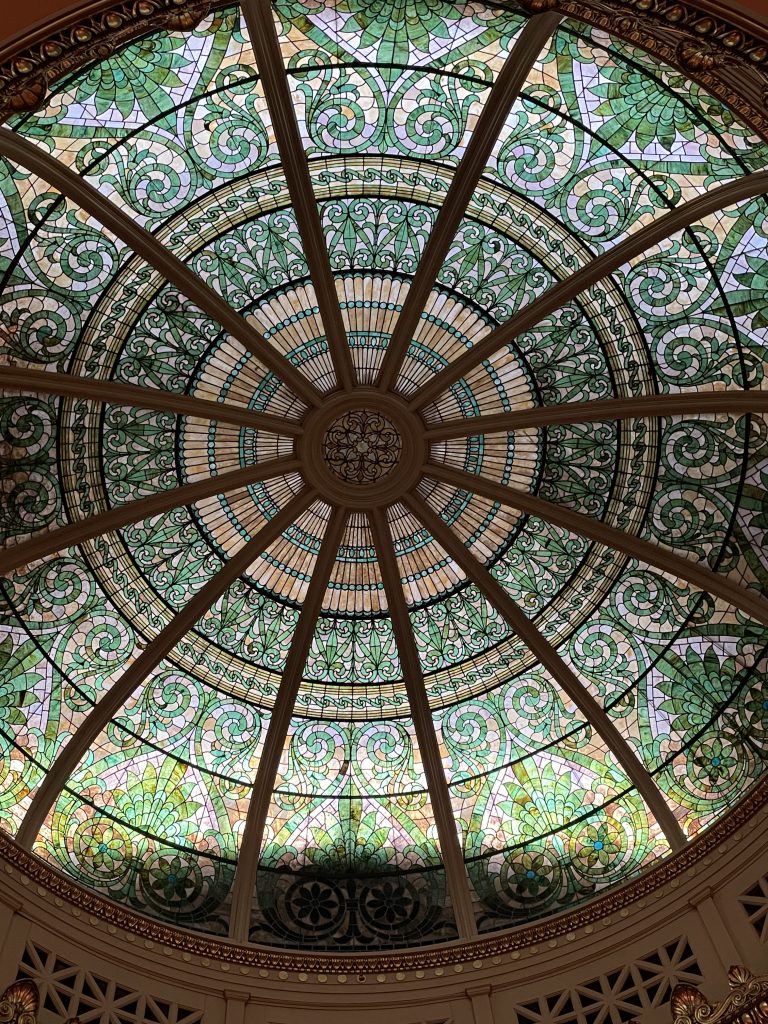
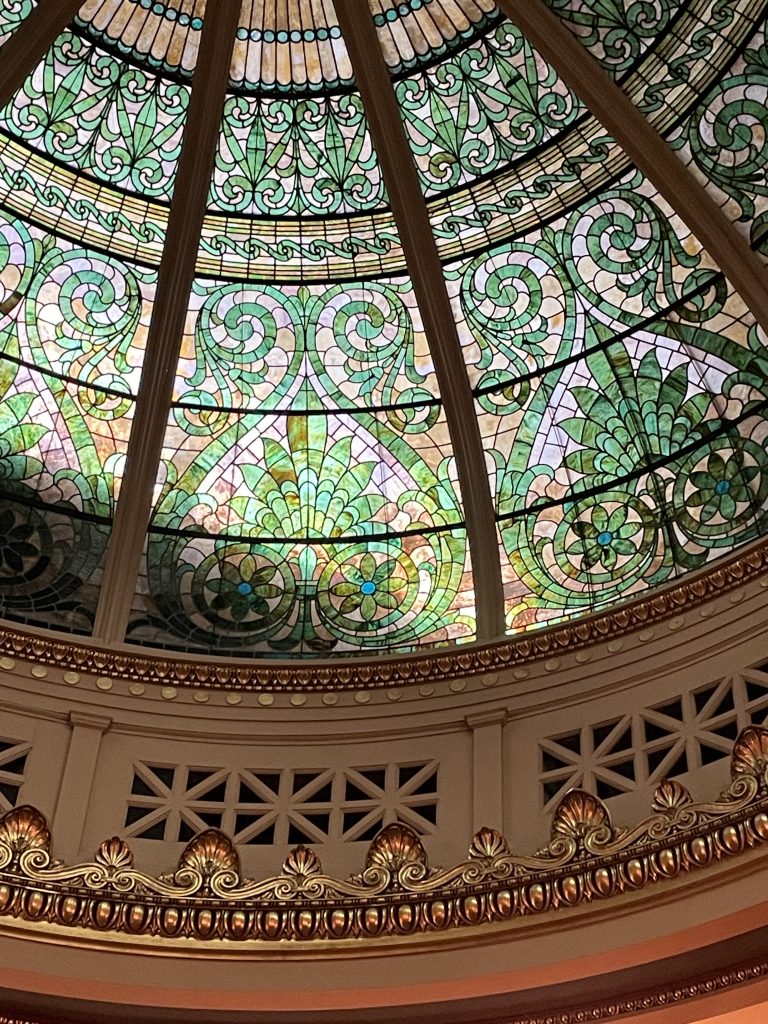
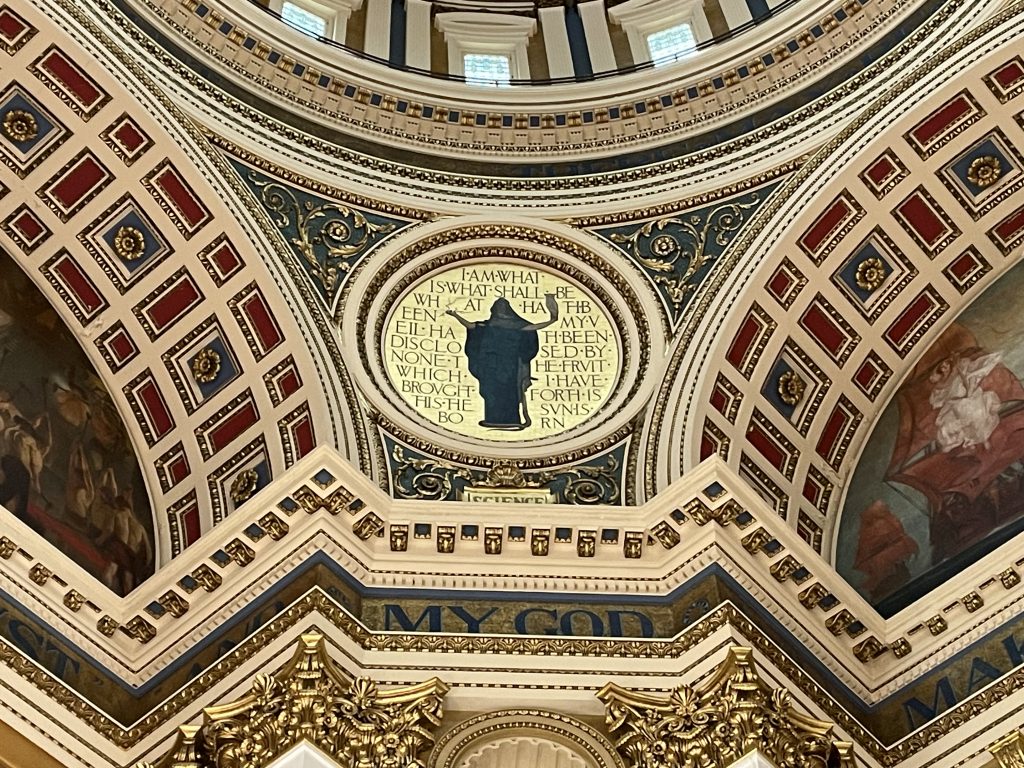
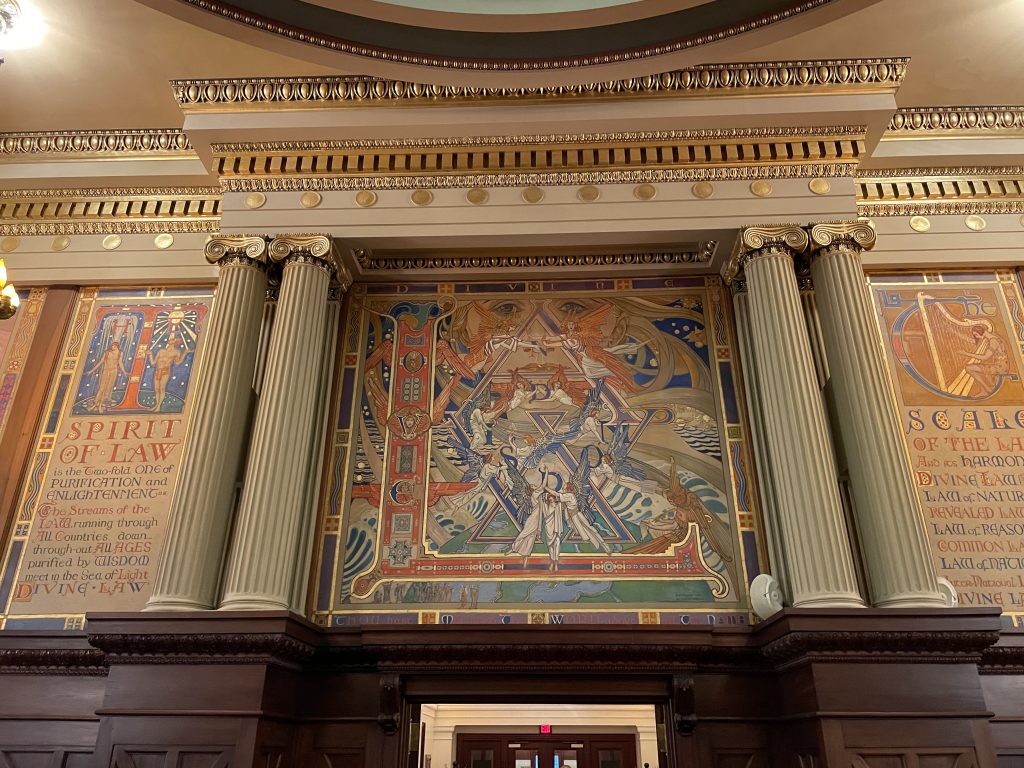

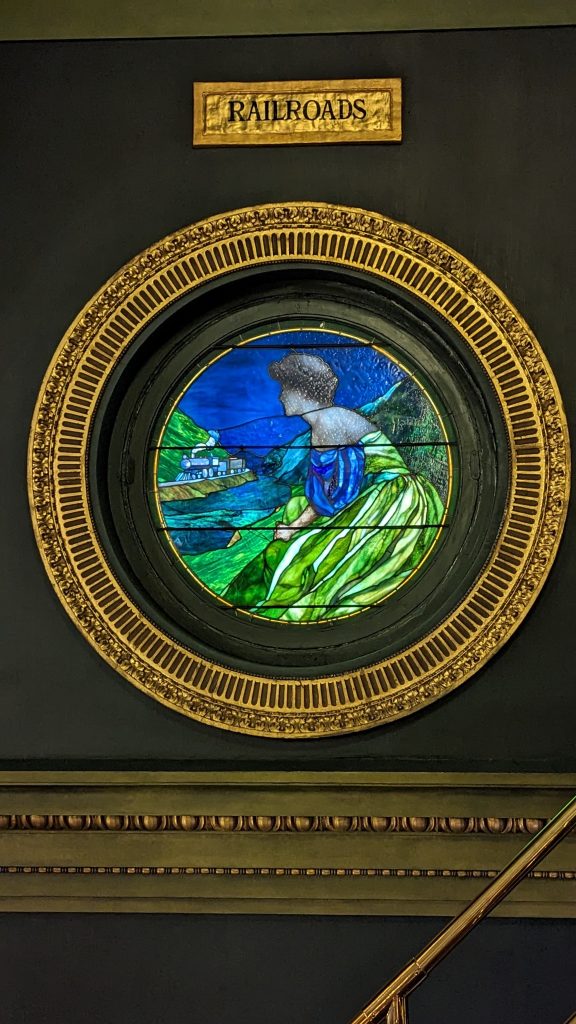
Below are some of the ~400 tile mosaics on the floor of the capitol. Henry Chapman Mercer convinced the capitol builders that it was vitally important to represent Pennsylvania’s heritage, and they eventually agreed. They are all numbered so it’s easy to identify and locate them. It’s hard to believe that people walk over these floors all day!
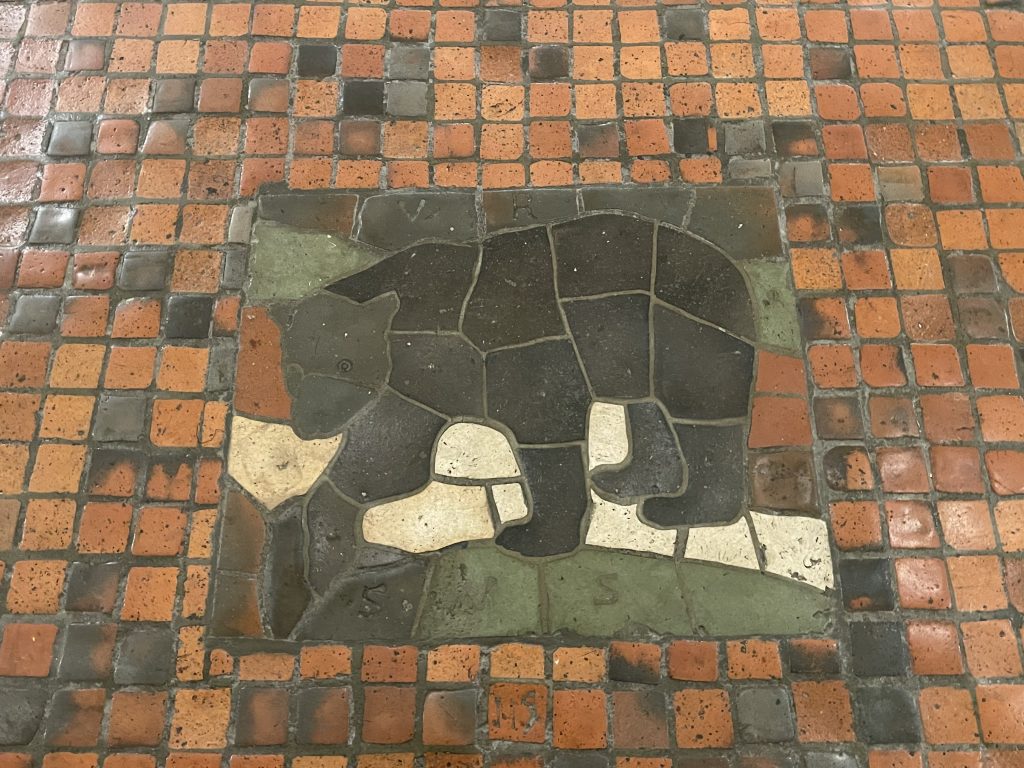
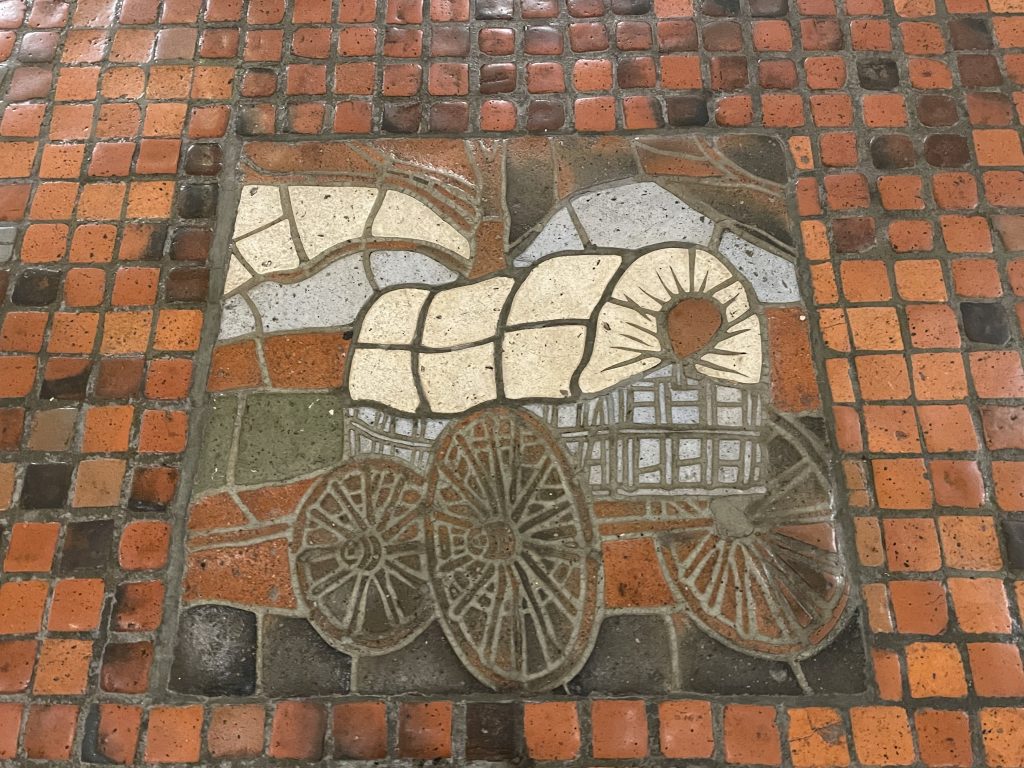
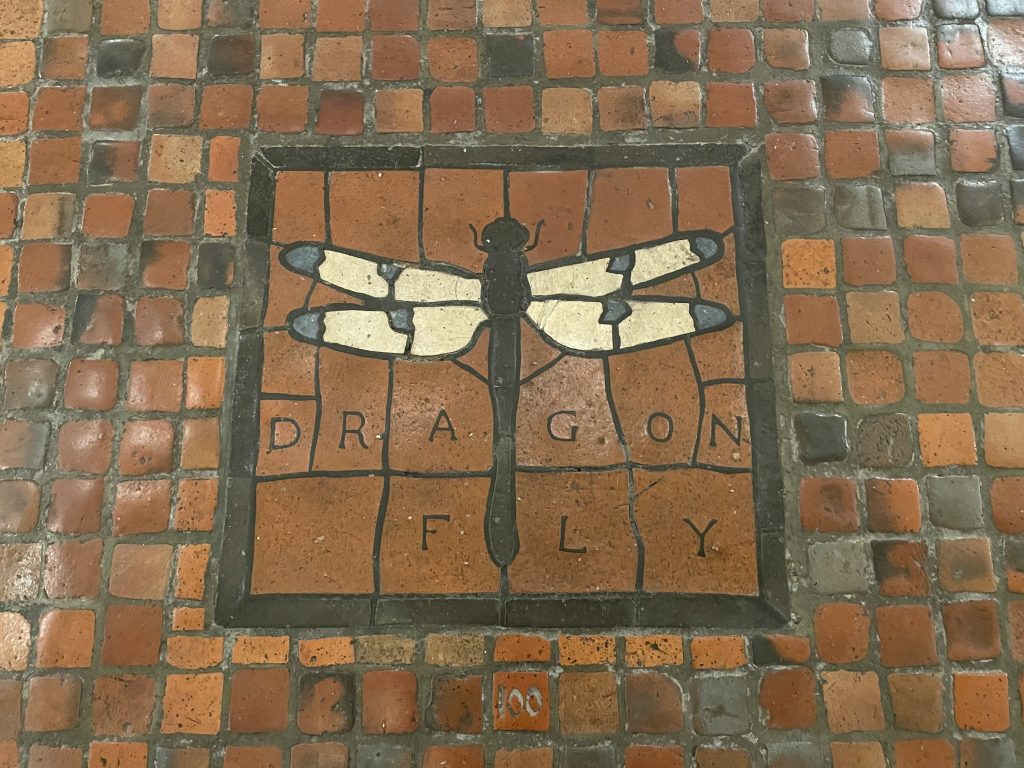
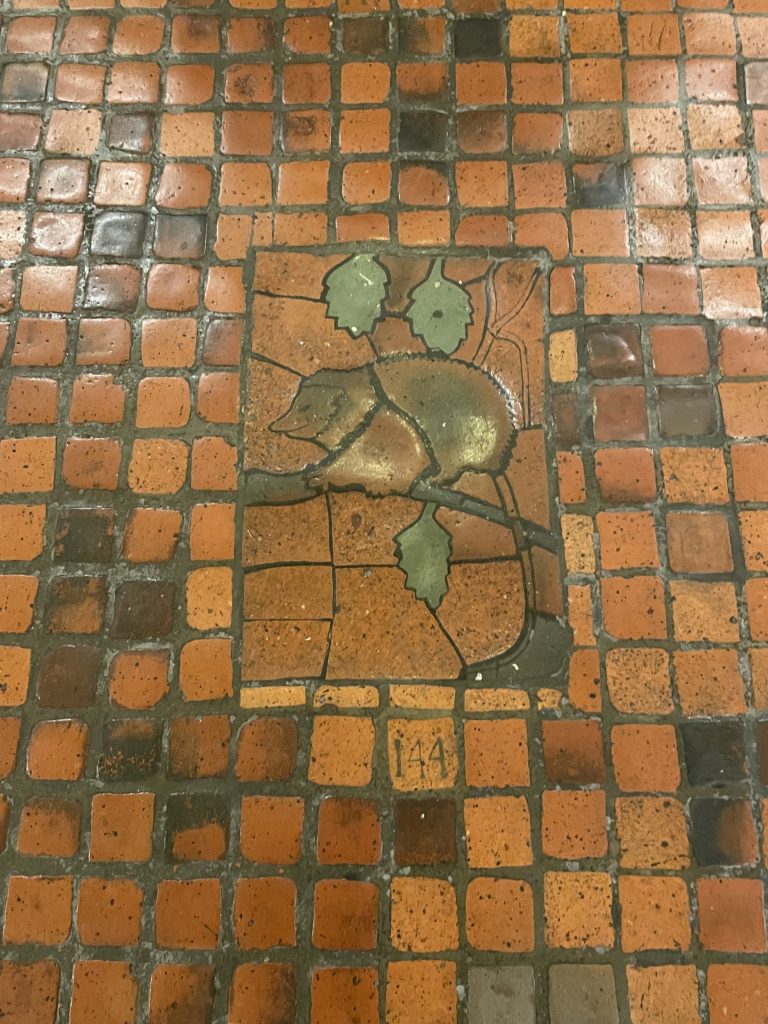
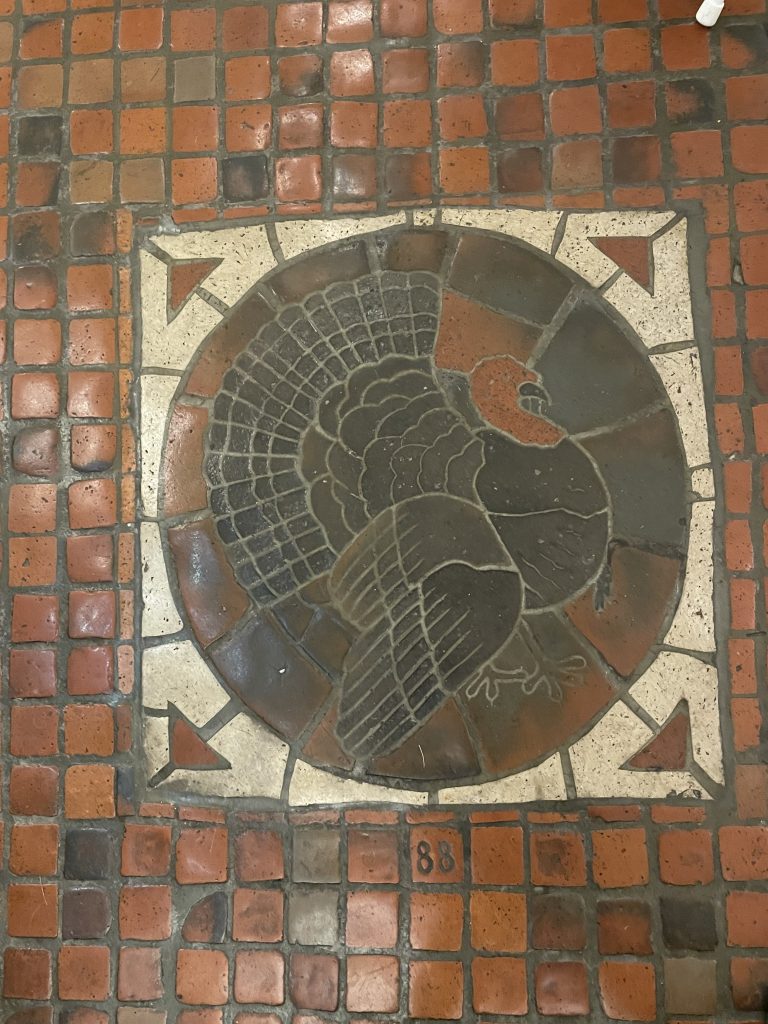
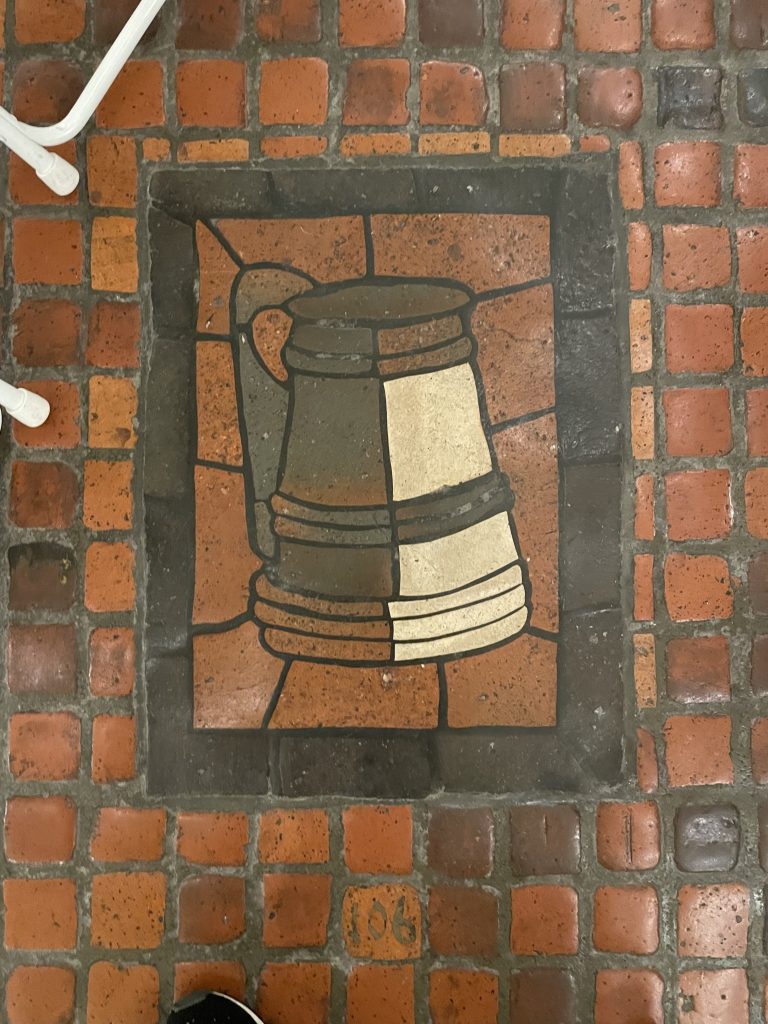





What a fabulous building. What strikes me is how American ideals were so entrenched in the political psyche of the time they were literally built in to and painted on nearly every surface. The stained glass is breathtaking!
I wish we could have seen the stained glass on a sunny day!